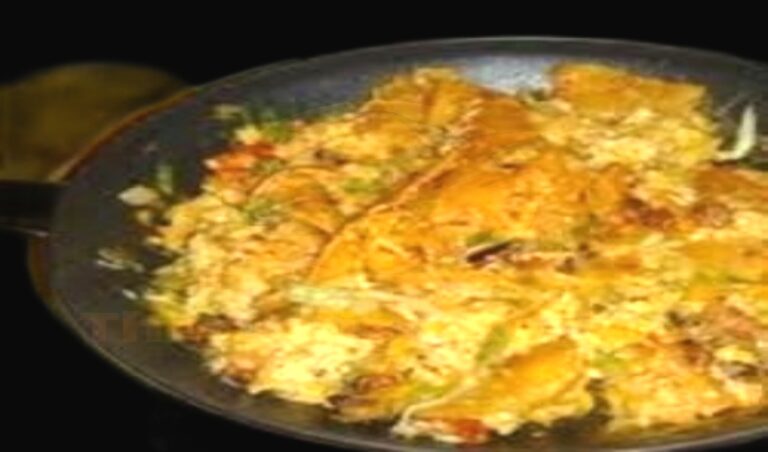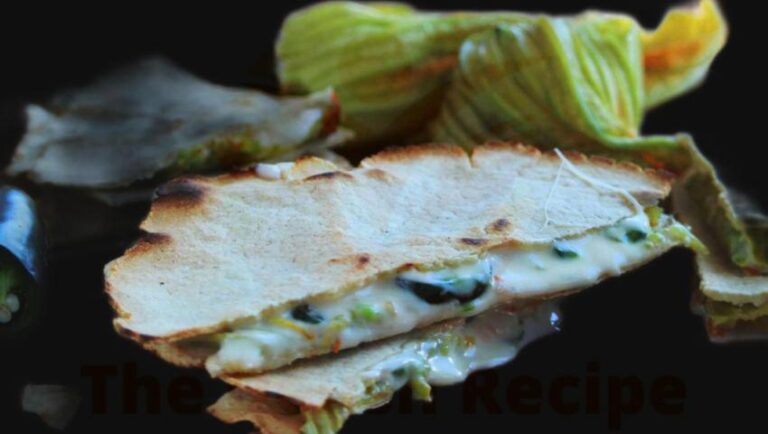Delicious Sauteed Napa Cabbage Recipe
As a lover of savory dishes, I have been looking for a new recipe to try and I recently discovered Sauteed Napa Cabbage. It’s a simple yet flavor-packed dish that is sure to be a hit with friends and family alike. With only a few simple ingredients, you can whip up a delicious meal in no time. The cabbage is cooked in a hot skillet until it’s lightly browned and tender, then finished off with a sprinkle of salt and pepper for a hint of umami. I’m so excited to share this delicious dish with you and I guarantee you won’t be disappointed!
Sauteed Napa Cabbage Recipe
Prep Time
10 mins
Cook Time
5 mins
Additional Time
15 mins
Total Time
30 mins
Servings
4 servings

Ingredients
- 2 tablespoons olive oil
- 2 cloves garlic, minced
- 1/4 teaspoon red pepper flakes
- 1 head Napa cabbage, cut into 1-inch slices
- 2 tablespoons soy sauce
- 2 tablespoons sesame oil
- 1 teaspoon honey
- 1 tablespoon white wine vinegar
- 2 tablespoons sesame seeds
Instructions
- Get your ingredients ready: Gather 2 tablespoons of olive oil, 2 cloves of minced garlic, 1/4 teaspoon of red pepper flakes, 1 head of Napa cabbage cut into 1-inch slices, 2 tablespoons of soy sauce, 2 tablespoons of sesame oil, 1 teaspoon of honey, 1 tablespoon of white wine vinegar, and 2 tablespoons of sesame seeds.
- Heat the oil: Heat 2 tablespoons of olive oil in a large skillet over medium heat.
- Add the garlic and red pepper flakes: Once the oil is hot, add the garlic and red pepper flakes and sauté for 1 minute.
- Add the cabbage: Add the Napa cabbage slices to the skillet and sauté for 3-5 minutes until the cabbage is tender.
- Prepare the sauce: In a small bowl, mix together 2 tablespoons of soy sauce, 2 tablespoons of sesame oil, 1 teaspoon of honey, and 1 tablespoon of white wine vinegar.
- Add the sauce: Pour the sauce over the cabbage and stir to combine.
- Simmer: Reduce the heat to low and simmer for 2-3 minutes to allow the flavors to combine.
- Add the sesame seeds: Sprinkle the 2 tablespoons of sesame seeds over the cabbage and stir to combine.
- Serve: Serve the sautéed Napa cabbage warm and enjoy!
Nutrition Facts
- Calories: 155
- Total Fat: 11g
- Saturated Fat: 2g
- Cholesterol: 0mg
- Sodium: 321mg
- Total Carbohydrates: 12g
- Dietary Fiber: 4g
- Sugars: 6g
- Protein: 3g
What flavors can be added to sautéed napa cabbage to make it more flavorful?
You can add a variety of flavors to sautéed napa cabbage to make it more flavorful! For a savory flavor, you can add garlic, onion, and soy sauce. For a spicy flavor, add chili sauce or hot sauce. For a sweeter flavor, add honey or maple syrup. You can also add a variety of herbs and spices such as cumin, coriander, or oregano. To make it even more flavorful, you can add diced tomatoes, bell peppers, and mushrooms. The possibilities are endless! Experiment with different flavors to find the perfect combination.
What are the health benefits of sautéing napa cabbage?
Sautéing napa cabbage is a great way to get a healthy, delicious side dish on the table. Not only does it taste great, but it also offers a range of health benefits. Here are a few of the reasons why sautéing napa cabbage is so good for you:
- Rich in Fiber: Napa cabbage is an excellent source of dietary fiber. Fiber helps improve digestion and helps you feel fuller for longer, which can help with weight management.
- Rich in Vitamins and Minerals: Napa cabbage is packed with essential vitamins and minerals like Vitamin A, Vitamin C, potassium, and magnesium. These nutrients are important for your overall health and help keep your body functioning properly.
- Low in Calories: Napa cabbage is incredibly low in calories, making it a great choice for anyone watching their weight. Each serving of sautéed napa cabbage contains only around 50 calories, so you can enjoy it guilt-free.
- Antioxidants: Napa cabbage is full of antioxidants, which help reduce inflammation and protect against cell damage. They also have anti-aging benefits, so you can keep your skin looking youthful and healthy.
When it comes to a healthy side dish, sautéed napa cabbage is a great choice. Not only does it taste great, but it also offers a range of health benefits that can help keep your body functioning properly.
How does sautéing napa cabbage compare to other cooking methods?
Cooking Napa cabbage is a great way to get a delicious side dish that is packed with flavor and nutrition. Whether you sauté it or use another cooking method, the end result is a flavorful and healthy dish. But how does sautéing Napa cabbage compare to other cooking methods? Let’s take a look!
- Sautéing: Sautéing Napa cabbage is a great way to quickly cook the cabbage and maintain its crunchy texture. It also helps to bring out the sweet and savory flavors of the cabbage. The key is to not overcook the cabbage, as this can cause it to become soggy.
- Steaming: Steaming is another popular way to cook Napa cabbage. This method helps to retain the vegetable’s nutrients and flavor. The downside is that the cabbage can become mushy if it’s cooked for too long.
- Stir-frying: Stir-frying is a great way to add a bit of crunch to the cabbage. It also helps to keep the cabbage’s natural flavors intact. The downside is that the cabbage can become overcooked if it’s cooked too quickly.
- Roasting: Roasting Napa cabbage is a great way to bring out the vegetable’s sweet flavor and make it caramelized and slightly crispy. The downside is that it can be time-consuming and require more oil than other cooking methods.
No matter which cooking method you choose, Napa cabbage is sure to be a hit at your next meal. With a few simple steps and the right ingredients, you can enjoy a delicious and nutritious dish that’s packed with flavor.
What type of pan or skillet is best for sautéing napa cabbage?
If you’re looking to sauté your napa cabbage to perfection, you’ll want to choose the right pan for the job. The best skillet for sautéing napa cabbage is a large, shallow stainless steel skillet. Stainless steel is great for sautéing because it heats quickly and evenly, and the shallow sides allow the moisture from the cabbage to evaporate quickly. Plus, stainless steel is durable and easy to clean.
When it comes to non-stick pans, you want to be careful. Non-stick pans can be great for some dishes, but for sautéing napa cabbage, the high heat of a sauté can cause the non-stick coating to break down and even become dangerous. Stick with stainless steel and you’ll be set.
If you don’t have a stainless steel skillet, you can also use a cast iron skillet. Cast iron skillets are great for sautéing because they retain heat well and are very durable. The only downside is that cast iron skillets take a bit longer to heat up than stainless steel.
No matter what type of skillet you choose, make sure you have a lid handy so you can cover the pan and let the cabbage steam. This will ensure your cabbage cooks evenly and comes out tender and flavorful.
When it comes to sautéing napa cabbage, a large, shallow stainless steel skillet is the way to go. It’s durable, heats quickly and evenly, and is easy to clean.
What type of oil is best for sautéing napa cabbage?
If you are looking to sauté some delicious Napa cabbage, your best bet is to go with a high-quality extra virgin olive oil. It has a high smoke point and a mild, neutral flavor that won’t overpower the cabbage. Plus, it’s high in healthy monounsaturated fats and antioxidants, making it a great choice for your sautéing needs.
When choosing an olive oil, be sure to go for one that is cold-pressed and has a low acidity. This will ensure a good quality product that is free of harmful compounds. Additionally, you can add a bit of butter to the olive oil for extra flavor. The combination of these two ingredients will create an aromatic and tasty sautéed cabbage.
If you don’t want to use olive oil, you can also opt for avocado oil. Avocado oil has a high smoke point and a mild, nutty flavor. It also contains healthy monounsaturated fats and a variety of vitamins and minerals.
Finally, you can opt for a light, neutral-tasting vegetable oil. These oils can be used as a substitute for olive oil, as they have a high smoke point and a mild flavor. They are also relatively inexpensive, making them a budget-friendly option.
No matter which oil you choose, make sure to heat it up before adding the Napa cabbage to the pan. This will help the cabbage to sauté evenly and prevent it from sticking. Once the oil is hot, add the cabbage and let it sauté for a few minutes.
How long should napa cabbage be sautéed for optimal texture?
If you want the perfect texture for your sautéed Napa cabbage, you should sauté it for about five minutes. This is the best way to ensure a crunchy, yet tender texture.
For this particular vegetable, the ideal texture can be hard to achieve. Too little time in the pan and you’ll end up with overly crunchy cabbage, while too much time can lead to a soggy, overcooked texture. That’s why it’s important to get the cooking time just right.
When you sauté Napa cabbage, you want to start with a hot pan and a good dose of oil. This will help the cabbage to caramelize and develop a nice golden color. Once the cabbage hits the pan, you should sauté it for about five minutes, stirring occasionally. During this time, you might want to add in some of your favorite seasonings, like garlic, ginger, or soy sauce.
Once the five minutes have passed, you should taste the cabbage to test for doneness. If you find it’s still too crunchy for your liking, cook it for a few minutes more. If it’s too soft, you may want to add a bit more oil and continue to cook until the desired texture is achieved.
For a delicious, perfectly cooked sautéed Napa cabbage, five minutes is the sweet spot. It’s important to monitor the cabbage while it cooks and to adjust the cooking time based on your preferences. With just a few minutes of effort, you’ll be able to enjoy perfectly cooked Napa cabbage every time.
How can sautéed napa cabbage be served as part of a meal?
You can serve sautéed Napa cabbage as part of a meal in so many delicious ways! From Asian-inspired dishes to classic American fare, this versatile vegetable can be a tasty addition to any meal. Here are some ideas on how to incorporate sautéed Napa cabbage into your next dinner:
- Make a veggie-packed fried rice dish! Start by sautéing the Napa cabbage in a little oil. Once it’s softened, add your favorite cooked rice, vegetables, and seasonings. For a spicy kick, add some sriracha or chili garlic sauce.
- Whip up a flavorful stir-fry. Start by sautéing the Napa cabbage with a little oil, then add your favorite stir-fry vegetables such as bell peppers, snow peas, and mushrooms. Add a sauce of your choice and serve over steamed rice or quinoa.
- Use it in tacos. Start by sautéing the Napa cabbage with a little oil and seasonings. Once it’s softened, add it to your favorite taco fillings such as black beans, corn, and diced tomatoes. Serve in soft or hard taco shells with your favorite toppings.
- Make a savory side dish. Start by sautéing the Napa cabbage with a little oil and seasonings. Once it’s softened, top with your favorite herbs and cheese. You can also add cooked sausage or bacon for a heartier dish.
No matter how you serve it, sautéed Napa cabbage adds a unique flavor and texture to any meal.




